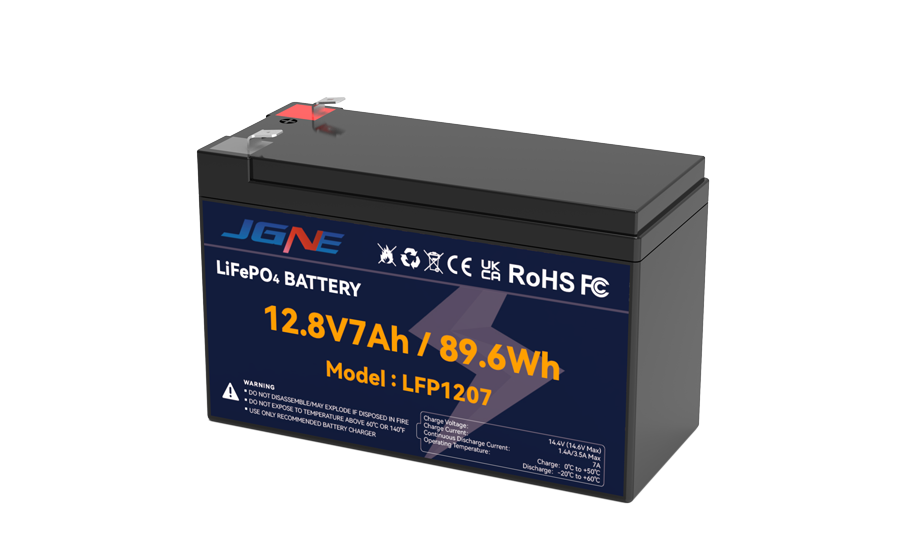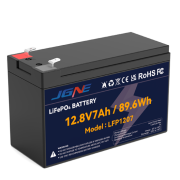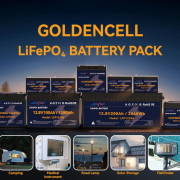Comparative Analysis of LiFePO4 Lithium Battery Packs Versus Lead-Acid Technologies
Lead-acid batteries have dominated deep-cycle applications for decades, but their limitations are becoming increasingly apparent. Users in marine, RV, and off-grid scenarios often struggle with heavy units, slow charging, and a short operational life. The move towards more dependable and efficient power storage is driving demand for advanced solutions. A modern LiFePO4 lithium battery manufacturer provides a direct replacement that addresses these historical shortcomings, offering superior performance, a longer lifespan, and greater convenience for a wide range of energy needs.
Table of contents:
Efficiency improvements with faster recharge and deeper discharge capabilities
Lifecycle cost benefits enabled by over 2000 cycles at high residual capacity
Environmental impact reduction and maintenance elimination advantages
Efficiency improvements with faster recharge and deeper discharge capabilities
Consistent power delivery creates a substantial practical difference in daily use between LiFePO4 and lead-acid batteries, particularly in critical applications. Imagine relying on a solar energy system for an off-grid cabin or a boat. With traditional lead-acid batteries, you might only be able to use about 50% of the battery’s stated capacity to avoid damage, cutting your available energy in half. LiFePO4 technology, by contrast, supports a 100% Depth of Discharge (DOD). This means every bit of stored energy is usable, providing much longer run times from a battery of the same nominal capacity. This efficiency is further supported by the use of automotive-grade cells, which deliver higher energy density. When it comes time to recharge, lead-acid can be notoriously slow, often taking many hours to reach full capacity. A quality LiFePO4 battery pack from a reputable LiFePO4 battery packs manufacturer recharges significantly faster, allowing users to quickly replenish their power from solar panels or a generator and get back to their activities. This rapid recharge and full discharge capability transforms the user experience, eliminating the constant power anxiety associated with older battery technologies.

Lifecycle cost benefits enabled by over 2000 cycles at high residual capacity
Evaluating the total cost of ownership reveals that lead-acid batteries often prove more expensive over time despite their lower upfront price. A typical lead-acid battery might last for 300 to 500 cycles, often requiring replacement every three to five years. This recurring expense, combined with potential downtime, adds up significantly over time. LiFePO4 batteries are designed for longevity. For instance, products from a leading LiFePO4 lithium battery manufacturer like Goldencell are rated for over 2000 cycles while retaining at least 80% of their original capacity. This durability translates to a service life of 10 years or more, drastically reducing the frequency of replacement and the associated costs. For businesses operating fleets of electric vehicles or managing large-scale renewable energy storage projects, sourcing wholesale LiFePO4 battery packs presents a clear long-term financial advantage. The built-in Battery Management System (BMS) protects the cells from overcharging, deep discharging, and extreme temperatures, further securing the investment and ensuring reliable performance throughout the battery’s extended lifespan. This makes the switch to LiFePO4 a smart financial decision, not just a technological upgrade.
Environmental impact reduction and maintenance elimination advantages
Operational and environmental benefits make LiFePO4 batteries especially compelling compared to traditional options. Lead-acid batteries contain hazardous materials, including lead and sulfuric acid, which pose disposal challenges and environmental risks if not handled correctly. They also require regular maintenance, such as checking and topping off water levels, which can be a messy and inconvenient chore. In contrast, LiFePO4 batteries are completely maintenance-free, offering a set-and-forget solution for users. They are produced using an eco-friendly process without harmful emissions or heavy metals. Another significant advantage is their lightweight and compact design. A LiFePO4 battery is typically about one-third the weight and two-thirds the size of a lead-acid battery with a similar capacity. This makes them much easier to install and ideal for weight-sensitive applications like RVs, marine vessels, and e-wheelchairs. For businesses considering bulk deployment, sourcing wholesale LiFePO4 battery packs simplifies logistics and installation, reducing labor and time. This combination of being clean, light, and maintenance-free makes them a responsible and practical choice for both indoor and outdoor power needs.
The decision to move on from lead-acid technology is a step towards a more efficient, cost-effective, and convenient power solution. With benefits like a 10-year or longer lifespan, 100% depth of discharge, and a maintenance-free design, LiFePO4 batteries represent a significant advancement. Their flexible configuration options, supporting up to 4S4P for a total of 40.96 kWh of energy, allow for scalable systems tailored to any need. For individuals or companies seeking reliable power, choosing an experienced LiFePO4 battery packs manufacturer ensures access to quality products and dependable OEM/ODM services for any application.






